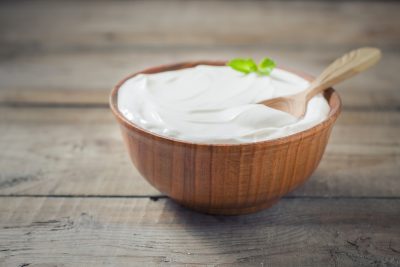Most people often think that a yeast infection is only associated with women, although men can also be affected too. If you don’t treat a penile yeast infection, it could result in a lot of symptoms that are uncomfortable, painful, and embarrassing.
It could also result in some severe issues if it is allowed to spread into the bloodstream. You could take some OTC medications to help treat this condition, but most importantly, you should take the simple preventive measures to ensure that are less likely to get this condition.
Causes of penile yeast infection
Candida is a fungus that is responsible for the development of a yeast infection. There is usually candida present in the body, but in small amounts. If the candida experiences an overgrowth, it will lead to a yeast infection.
Candida often spreads in an environment that is moist. A major cause of this condition is having unprotected sex with a partner that is diagnosed with a vaginal yeast infection.
However, this condition can also be contracted without having sexual intercourse. For instance, you are likely to develop a penile yeast infection if you don’t observe proper hygiene.
Risk factors for a penile yeast infection
Apart from having sexual intercourse with a woman that is infected, there are factors that could make you more susceptible to having a penile yeast infection.
One of the top risk factors is being uncircumcised because the parts beneath the foreskin could allow for candida to spread significantly. Not taking your bath often and washing your genitals properly could make you more likely to develop this condition.
Antibiotics usage for a long period, being diabetic, or being extremely overweight are also risk factors for a penile yeast infection. You might also be more susceptible to having a penile yeast infection if your immune system is impaired from HIV, cancer, or other factors.
Symptoms of penile yeast infection
 The first signs of a penile yeast infection is mostly a red rash on the penis; there might also be shiny, white patches. Also, you would notice that the skin of your penis is moist, and there might be a clotted white material beneath the foreskin or other skin folds.
The first signs of a penile yeast infection is mostly a red rash on the penis; there might also be shiny, white patches. Also, you would notice that the skin of your penis is moist, and there might be a clotted white material beneath the foreskin or other skin folds.
You might also have a burning and itching feeling on your penis. If there is redness, itchiness, and pain in your penis, this could be a sign of a more severe condition like several sexually transmitted infections.
This is why you should not overlook the symptoms if they appear. Your healthcare provider or a urologist are responsible for diagnosing this condition, mostly in one appointment.
Knowing if you are infected with a penile yeast infection
If you start developing the symptoms of a penile yeast infection, it would be best that you see your doctor as soon as possible. You shouldn’t diagnose and start treatment by yourself. Your healthcare provider will review your symptoms and examine your genitals.
Your doctor would also examine the white substance that forms on the penis under a microscope to determine the type of fungus that is responsible for your symptoms.
If your doctor or urologist is not available at the moment, try to visit the emergency room or an urgent healthcare center. The earlier your treatment starts, the better as you could avoid further complications.
Complications of a penile yeast infection
Balanitis is a major issue that accompanies this condition. This is when there is a swelling of the penis head or foreskin. Having diabetes makes you more susceptible to having balanitis.
You might have a scarred foreskin if balanitis is not treated properly. This is a painful condition, and it could make it quite challenging to urinate. If balanitis is left untreated, it could lead to painful and inflamed glands in addition to fatigue.
Invasive candidiasis or candidemia is a condition where the yeast infection enters the bloodstream. Men who delay before receiving treatment are more likely to experience this condition as the infection would have moved past the penis.
This condition also affects men who have poor immune systems. If you have been hospitalized where you had urinate by using a catheter, you could have a higher chance of experiencing this condition.
This type of yeast infection is advanced and severe. You may need to take oral antifungal medications for a few weeks.
How long a penile yeast infection lasts
If you notice the symptoms of a penile yeast infection and treat it early as well as having it show improvements after taking antifungal medications, it could disappear in less than seven days.
For men that have an active sex life, it would be best if your partner also undergoes treatment for a yeast infection, as this ensures there is no recurrence. Have your partner undergo treatment even if the infection were not spread to you from them.
If you are getting frequent yeast infections and it is certain that it is not due to poor hygiene or sexual contact, then you should speak to your healthcare professional to find out other causes. You might have other health problems like diabetes.
Typically, men are not as likely to have a yeast infection as women. However, you should be well educated to identify the symptoms and get treatment as soon as possible.
How to prevent a penile yeast infection
The best way to avoid getting a penile yeast infection is to abstain from sex with someone that is infected. Also, try avoiding sex with anybody while you are infected. You would end up spreading the infection to your partner; then when you get treated, you could end up getting re-infected.
These are the measures to take to prevent getting or spreading a yeast infection;
- Use a condom as this significantly reduces your risks of getting a yeast infection.
- Ensure that you maintain good hygiene. Bathe regularly and wash your genitals properly.
- For uncircumcised men, ensure that you use soap and warm water to wash beneath your foreskin. Also, after having sexual intercourse, ensure your foreskin is returned to its normal position.
Treatment for penile yeast infection
Most times, topical antifungal creams and ointments are sufficient to treat a penile yeast infection.
The antifungal creams that are recommended by several healthcare providers include;
- Miconazole (Cruex, Desenex, Lotrimin AF, Ting Antifungal)
- Imidazole (Canesten, Selezen)
- Clotrimazole (Lotrimin AF, Anti-Fungal, Cruex, Desenex, Lotrimin AF Ringworm)
You can get almost all of these creams as over-the-counter medications, which means that it can be purchased without a prescription. If you are suffering from a severe or long-term infection, then you will need to get a medication that requires prescription.
For infections that have advanced into balanitis, it is advisable to use hydrocortisone cream and oral fluconazole (Diflucan). In some cases, the yeast infection might reappear after they seem to have been resolved.
If this happens, your doctor might give you a treatment plan that is to be undergone weekly for a few months after some weeks of receiving treatments daily.
If you are not circumcised, and the infection is not responding properly to the treatment, you might have to be circumcised. Circumcision is a surgical process that is normally done on infants; it can also be carried out safely on men, regardless of age.
Natural home remedies for a penile yeast infection
These are some of the home treatments you can use for a penile yeast infection;
Tea tree oil
Tea tree oil comes with a lot of healing features, and this is because it provides antiprotozoal, antifungal, antibacterial, and antiviral benefits.
In this case, the antifungal benefits are what helps in the treatment of yeast infections when you apply the oil to the head of the penis. Tea tree oil comes in many strengths, with the pure form being the strongest. If you buy pure tea tree oil, ensure you dilute it with olive oil.
Yogurt
 Yogurt is a probiotic. Research has shown that adding yogurt to your diet can boost positive bacteria growth, which will help to fight against infections like candida or thrush.
Yogurt is a probiotic. Research has shown that adding yogurt to your diet can boost positive bacteria growth, which will help to fight against infections like candida or thrush.
Adding plain yogurt directly to the area that is affected has also been found to be effective. Ensure that you opt for yogurt with live bacteria.
Garlic
Garlic has been found to have antibacterial and antifungal properties. A study compared a typical cream used for a yeast infection to a cream made of garlic and thyme.
It was seen that the cream made with garlic and thyme helped reduce the side effects and had the same healing abilities. In addition to fighting yeast infection, garlic also provides you with a lot of health benefits.
Coconut oil
Coconut oil is used by a lot of natural healers thanks to its numerous health benefits like restoring hair, moisturizing skin, and relieving constipation. Studies have shown that coconut oil is very effective when treating a yeast infection.
Apple cider vinegar
Apple cider vinegar works as an antifungal when fighting against the candida species of yeast. Directly applying it to the affected area works too. The smell may be of concern to you at first, but with time it would evaporate.
If you experience a burning feeling, mix it with a bit of water before applying next time.








COMMENTS